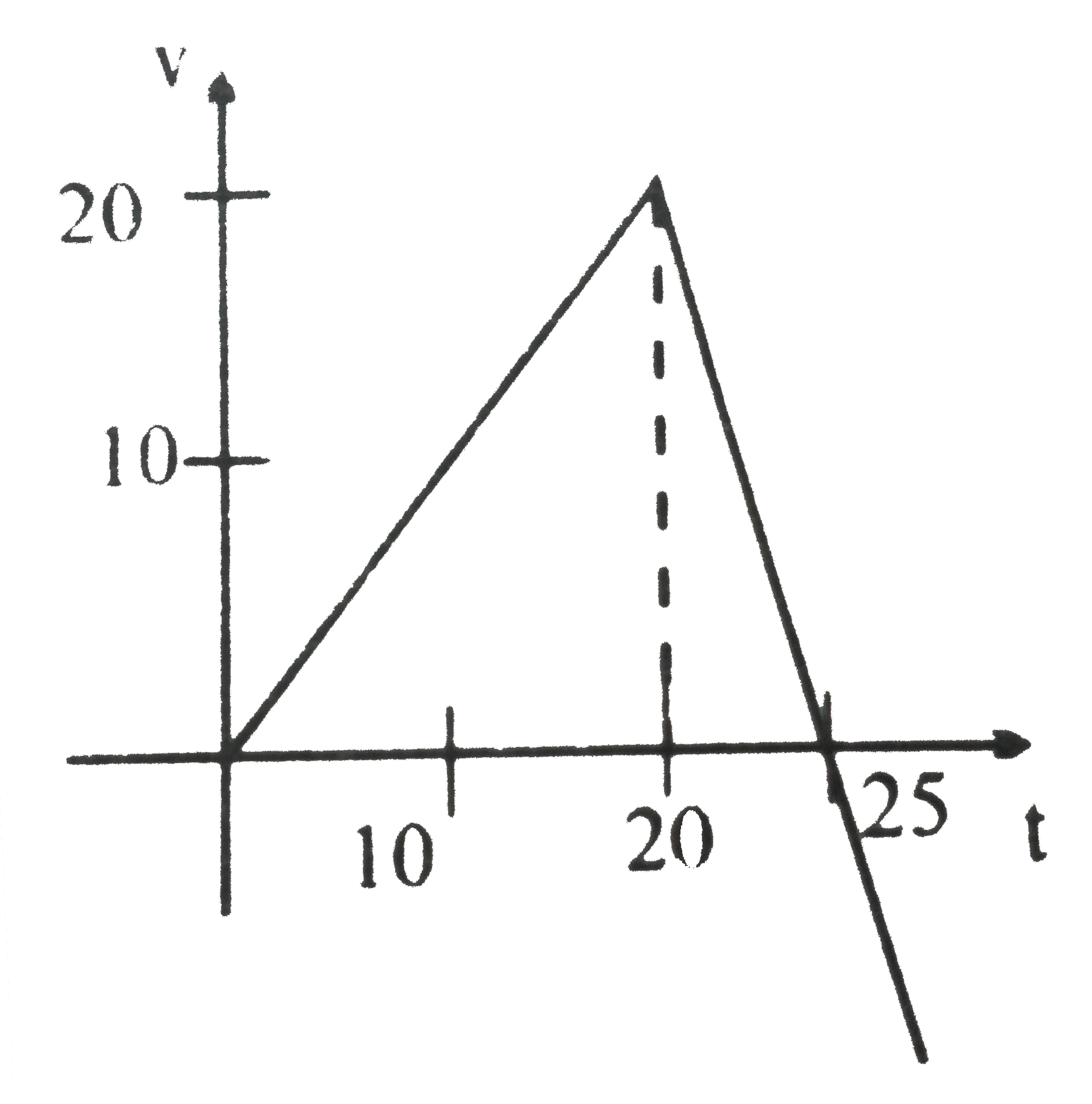The position vector of a particle is given by →r = →r0 (1-at)t, where t is the time and a as well as →r0 are constant. How much distance is covered by the particle in returning to the starting point?
2r0a
r0a
r02a
r04a
The correct Answer is:C
To solve the problem, we need to find the total distance covered by the particle when it returns to the starting point. The position vector of the particle is given by:
→r(t)=→r0(1−at)t
where t is the time, a is a constant, and →r0 is also a constant vector.
Step 1: Find the velocity of the particle
The velocity →v(t) is the derivative of the position vector with respect to time t:
→v(t)=d→rdt=→r0ddt((1−at)t)
Using the product rule of differentiation:
→v(t)=→r0(1−at+tddt(−at))=→r0(1−at−at)=→r0(1−2at)
Step 2: Determine when the particle changes direction
The particle changes direction when the velocity is zero:
→v(t)=0⟹1−2at=0
Solving for t:
2at=1⟹t=12a
Step 3: Calculate the position at t=12a
Now we substitute t=12a back into the position vector to find the distance x:
→r(12a)=→r0(1−a(12a)(12a))
Calculating the expression inside the parentheses:
=→r0(1−14)=→r0(34)
Step 4: Find the distance x
The distance x from the starting point is the magnitude of the position vector:
x=∣∣∣→r0(34)∣∣∣=34|→r0|
Step 5: Calculate the total distance covered
The total distance covered by the particle when it returns to the starting point is twice the distance x:
Total distance=2x=2×34|→r0|=32|→r0|
Final Answer
Thus, the total distance covered by the particle in returning to the starting point is:
32|→r0|
---
The velocity →v(t) is the derivative of the position vector with respect to time t:
The particle changes direction when the velocity is zero:
Now we substitute t=12a back into the position vector to find the distance x:
The distance x from the starting point is the magnitude of the position vector:
The total distance covered by the particle when it returns to the starting point is twice the distance x:
Thus, the total distance covered by the particle in returning to the starting point is:
Topper's Solved these Questions
- BOOK - ALLENCHAPTER - MOTION IN A PALNEEXERCISE - EXERCISE-340videos
MOTION IN A PALNE
- BOOK - ALLENCHAPTER - MOTION IN A PALNEEXERCISE - SOLVED EXAMPLE28videos
MOTION IN A PALNE
- BOOK - ALLENCHAPTER - MOTION IN A PALNEEXERCISE - EXERCISE-199videos
MOTION IN A PALNE
- BOOK - ALLENCHAPTER - KINEMATICS-2DEXERCISE - Exercise (O-2)46videos
KINEMATICS-2D
- BOOK - ALLENCHAPTER - NEWTON'S LAWS OF MOTION & FRICTIONEXERCISE - EXERCISE (JA)4videos
NEWTON'S LAWS OF MOTION & FRICTION
Similar Questions
The position vector of a particle is given by →r = →r0 (1-at)t, where t is the time and a as well as →r0 are constantwhat will be the velocity of the particle when it returns to the starting point?
View SolutionThe position vector of a particle is given by →r=→r0 (1-at)t, where t is the time and a as well as →r0 are constant. After what time the particle retursn to the starting point?
View SolutionThe position of a particle is given by
x=2(t−t2)
where t is expressed in seconds and x is in metre.
The particleView SolutionThe radius vector of a particle varies with time t as →r=→bt(1−αt) is a constant vector and a is a positive factor.Find the distance s covered before the particle comes to rest
View SolutionThe position vector of a particle is given by the relation →r=→α(1−γt+βt2), where →α is a constant vector while, β and γ are positive constants. Which of the following statement is true ?
View SolutionThe position of a particle is given by
x=2(t−t2)
where t is expressed in seconds and x is in metre.
The acceleration of the particle isView SolutionThe position of a particle is given by →r=(8tˆi+3t2ˆj+5ˆk)m where t is measured in second and →r in meter. Calculate, the velocity and the acceleration of the particle.
View SolutionThe position of a particle is given by →r=(8tˆi+3t2ˆj+5ˆk)m where t is measured in second and →r in meter. Calculate, the velocity and the acceleration of the particle.
View SolutionThe fig. shows the v−t graph of a particle moving in straight line. Find the time when particle returns to the starting point.
 View Solution
View SolutionThe position vector of a aprticle is given as →r=(t2−4t+6)ˆi+(t2)ˆj. The time after which the velocity vector and acceleration vector becomes perpendicular to each other is equal to
View Solution

